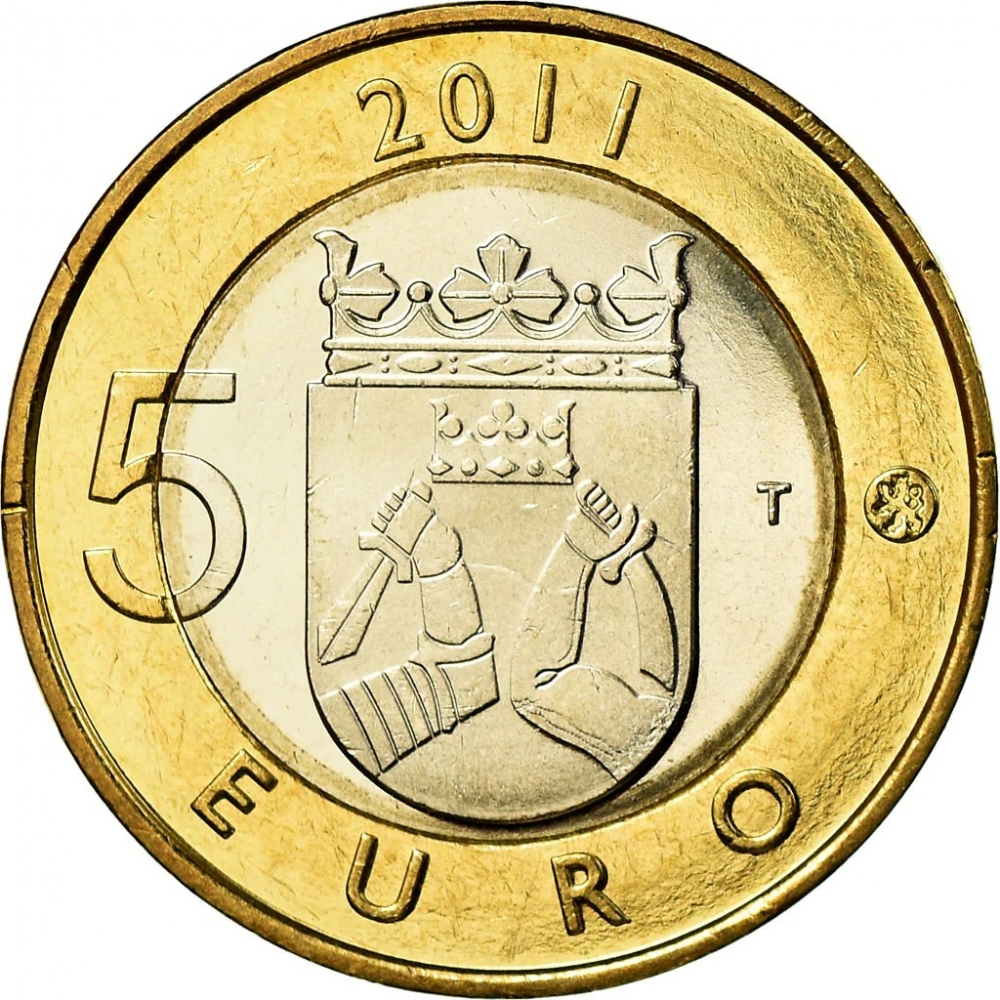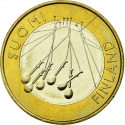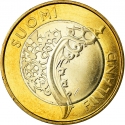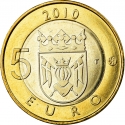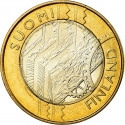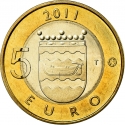You are about to finish your registration. Please check your mailbox (including spam folder). There should be a letter with a confirmation link. Check setting to make sure that your e-mail address is correct.
Send letter againDescription
Authorised by the Ministry of Finance, the Mint of Finland issued 2010-2011 a coin series inspired by Finland’s historical provinces. There are nine historical provinces: Åland, Tavastia, Karelia, Lapland, Ostrobothnia, Satakunta, Savonia, Uusimaa and Finland Proper. Administratively the historic provinces ceased to exist in 1634 when the country, then a part of Sweden, was divided into counties.
The reverse of each provincial coin features the historical province’s coat of arms. On the obverse of the coin is an image closely related to the culture of the province
The Karelian provincial coin is the sixth coin issued in the series.
Engraver: Nora Tapper
Obverse

|
The design honours the Karelian tradition of birch bark crafts. Country name in Finnish and Swedish on the ring. SUOMI |
|---|---|
Reverse

|
Depicts the historic coat of arms of Karelia, a region of Finland surrounded by the value and the date above. Engraver's initial (T) and the mint's logo (lion) on the right. 2011 |
| Edge |
5 Euro
Historical Provinces
Karelia
Subscribe series
KM# 159 Schön# 162
Historical Provinces
Karelia
Characteristics
| Type | Commemorative Issue (Non-circulating) |
| Material | Bi-Metallic |
| Ring | Aluminium Bronze |
| Center | Cupronickel |
| Weight | 9.8 g |
| Diameter | 27.25 mm |
| Thickness | - |
| Shape |
|
| Alignment | Medal |
| Mint |
Mint of Finland
|

